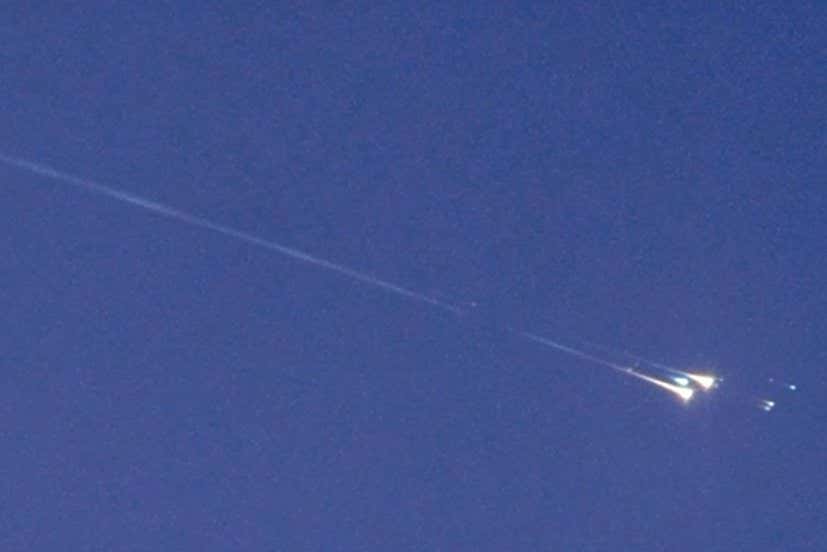The hunt for extraterrestrial spacecraft has generally been scattered and disorganised, but now NASA is collecting all the data in one place to try to find out if any UFOs really are alien ships
By Leah Crane
9 June 2023
An object known as WT1190F entering Earth’s atmosphere in February 2015 was thought to potentially be a UFO, but was likely human-made debris
IAC/UAE/NASA/ESA
The following is an extract from our monthly Launchpad newsletter, in which resident space expert Leah Crane journeys through the solar system, the galaxy and beyond. You can sign up for Launchpad for free here.
Aliens are in the headlines, but there still isn’t solid evidence that they’ve come to Earth. On 31 May, NASA’s new task force on unidentified anomalous phenomena (UAPs) held its first public meeting. UAP is basically bureaucrat-speak for UFO, anything in the sky that can’t immediately be traced back to an aircraft or known natural phenomenon.
NASA announced the formation of this team last year, and it has been controversial. A large portion of the public meeting was spent talking about the harassment that the team members have faced online, both from people who are certain that aliens are real and have definitely visited Earth, as well as from those who think it’s ridiculous that a government agency would investigate claims of alien craft. I have to say that I lean towards the latter position, although obviously not far enough to shout at anyone about it on the internet.
Advertisement
So far, the UAP group hasn’t proved me wrong. Out of more than 800 reports of UAPs, almost all are traceable back to mundane sources – commercial aircraft, balloons, even radiation from microwave ovens. Less than 5 per cent of them remained anomalous after investigation – but not, as far as anyone can tell, because they’re aliens.
In those cases, the data is the problem. “There are many cases in which we might be under the impression that there might be something anomalous, where the data is just not sufficient to support an analysis that would allow us to really understand… the behaviour of the object,” said Federica Bianco at the University of Delaware in a press call after the meeting. “It’s very possible that with better data they would be reconciled with known phenomena.”
That doesn’t mean the group is useless, as its leader, David Spergel, pointed out. “The first step if you want to find needles in haystacks, or if you don’t even know what you’re looking for, is to learn about and characterise hay really well.” So far, the team has looked at a lot of things that could have potentially been needles and found that they’re hay, which isn’t unexpected.
